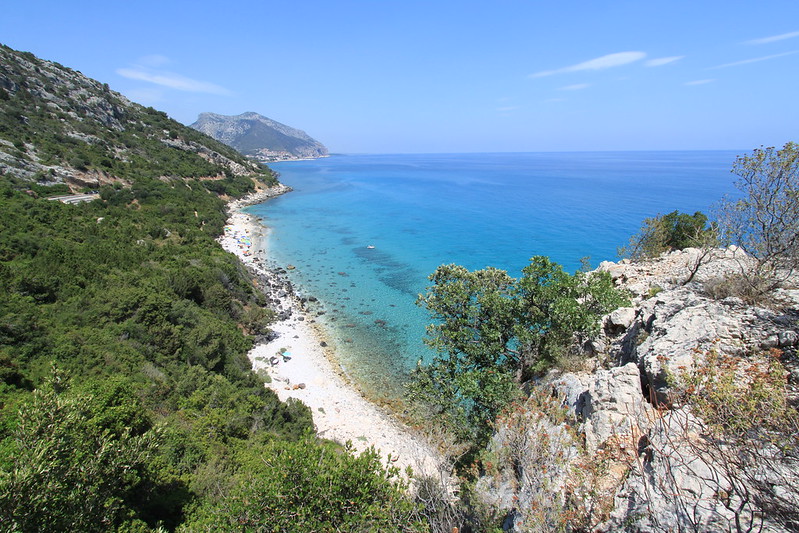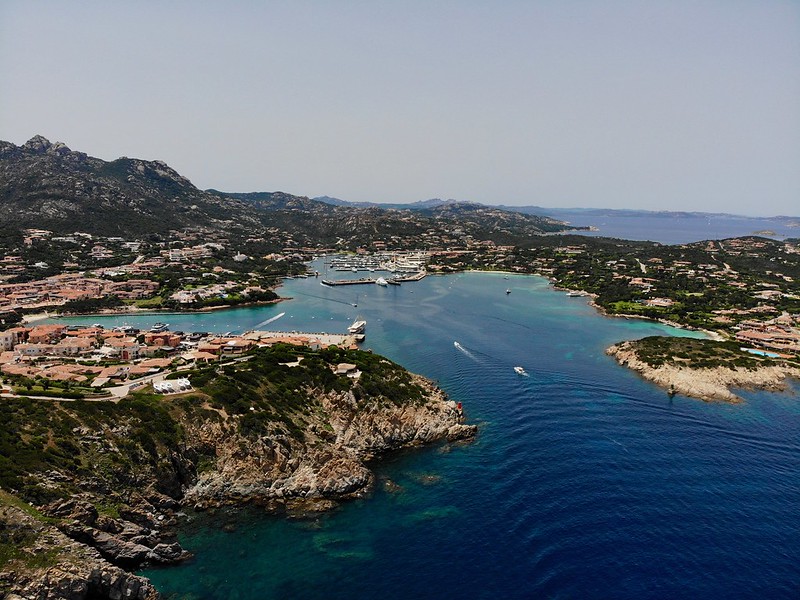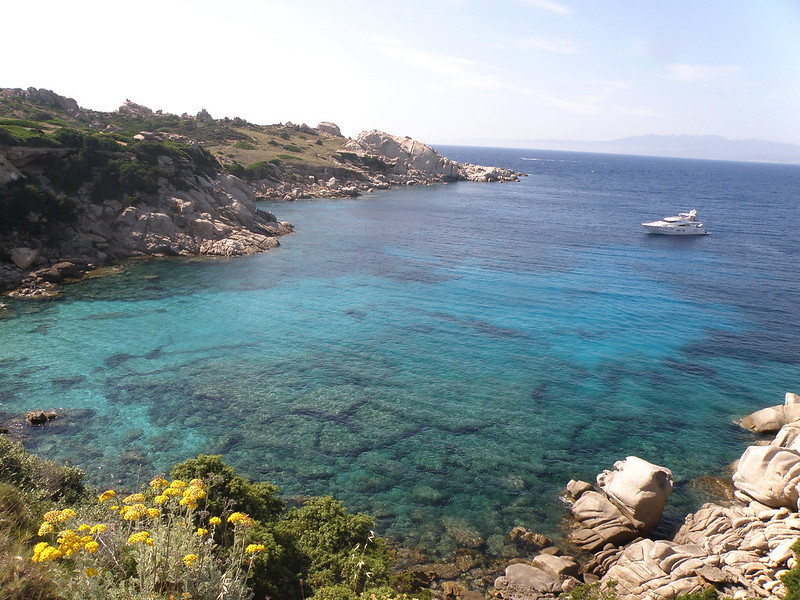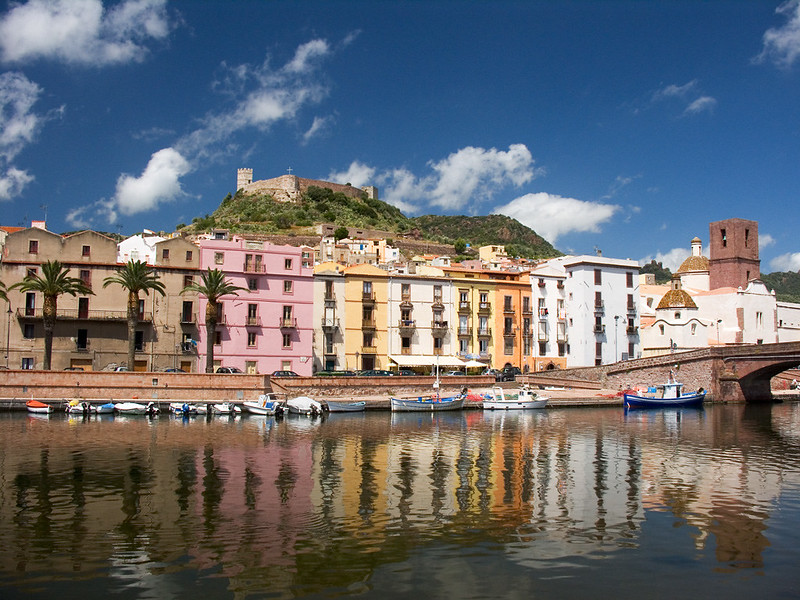A favorite beach retreat for Italians, the island of Sardinia—Italy’s second largest after Sicily—flies below the radar of many international travelers. This land of contrasts features untamed inland countryside inhabited primarily by millions of sheep as well as luxurious, celebrity-dense resorts along the coastline. Its idyllic white-sand beaches are by far the biggest draws on the island, while the time-capsule mountain villages are almost empty.
With Bronze Age ruins, magnificent Romanesque cathedrals, and even a vintage train, there are a handful of attractions on the island if you’re not a beach lover…but Sardinia is undeniably a seaside destination. Here’s how to explore the exquisite beaches and cobalt-blue waters along its coastline, sample its distinct cuisine, and learn about its prehistoric past.
The Northern Costa Smeralda
Most visitors arrive on Sardinia by catching a flight or ferry from Italy’s mainland to the port city of Olbia on the northeastern coast. From here, it’s a quick trip to the spectacular beaches and luxury resorts of Porto Rotondo and Porto Cervo along the Emerald Coast (Costa Smeralda) on the northern tip of the island, including Spiaggia del Principe, a favorite of the Aga Khan. Highlights along this stretch of coastline include dolphin-watching cruises in Golfo Arancini and boat trips to the Maddalena Archipelago and Caprera Island nature reserve, dazzling islets that sit just off the northeastern coast.
Stop in Santa Teresa di Gallura, a coastal village sitting just across the water from the southernmost tip of Corsica, to visit the Bronze Age Nuragic ruins of Lu Brandali; Sardinia is home to roughly 7,000 of these nuraghi dwellings, as well as tombe dei giganti (“giants’ graves” tombs) and domus de janas (“fairy house” tombs). The nearby sleepy hilltop village of Castelsardo is a time machine to historic Sardinia, and home to the Museum of Mediterranean Weaving.
One of the most striking sights along this northern stretch of coastline is the Asinara National Park, a tiny islet known for its blue-eyed albino donkeys (hence the name “Asinara” from “asino”, or ass) with scenic hiking trails crisscrossing its pristine countryside, idyllic beaches, and historic ruins. Full-day mini cruises to the park include stops to swim and snorkel in the turquoise waters as well as free time on land to hike or relax on the beach.
Alghero and the Western Coast
The pretty resort town of Alghero is one of the most popular destinations on the island. This medieval port city has historic links to Spain and you can see the Catalan influence on its local architecture and cuisine. Stroll through the historic center to admire the gothic Cathedral of Santa Maria and browse the boutiques and shops lining Via Roma that sell traditional coral jewelry and other island handicrafts. Then settle in at a traditional restaurant to sample the city’s dishes rooted in Spanish culture—including paella algherese (Alghero paella) and aragosta alla catalana (Catalan crayfish)—washed down with the island’s wines: Vermentino whites and Cannonau reds.
Once you’ve explored the town by land, take in Alghero’s Coral Coast by sea with a mini cruise to Neptune’s Grotto (Grotta di Nettuno) at Capo Caccia, famous for its bright blue waters and dramatic rock and stalactite formations.
Skirt the coastline to the south and you’ll reach Bosa, a pretty riverside harbor town with pastel houses lining the banks of the Fiume Temo crowded with bobbing fishing boats below and the imposing Castello Malaspina looming above. Most charming after the daytime crowds have left, Bosa is an ideal choice for a casual seafood dinner.
Head north of Alghero and you’ll reach Sassari, the second largest city on Sardinia with a fascinating mix of Catalan Gothic, Baroque, and Neoclassical architecture along its main Corso Vittorio Emanuele II. This cultural hub and university town is home to the Museo Nazionale Sanna, one of the most important museums on the island, with archaeological collections that include Nuragic bronze figures and jewelry and Roman artifacts. Just outside the city, be sure to stop and admire the church and ruined cloister of Santissima Trinità di Saccargia, a surprising example of Pisan architecture.
Cagliari and the Southern Coast
Perhaps the most cosmopolitan of Sardinia’s cities, Cagliari on the southern coast has an intact medieval historic center, protected wetlands, and easy access to a number of fascinating archaeological sites. Explore the city’s hilltop citadel and cathedral then head down to the sea-level Molentargius Natural Park and its coastline wetland thick with colorful resident flamingoes and other waterfowl.
Just outside the city, you can choose between adventurous outdoor activities and one-of-a-kind archaeological sites—or opt for a bit of both. Take in Devil’s Saddle by sea via kayak or by land on one of the area of hiking trails, set sail with a boat tour across the Gulf of Cagliari, or simply relax on the sand-lined bays of the Costa del Sud. Archaeology enthusiasts can opt to tour the Phoenician ruins at Nora or the UNESCO-listed neolithic site Nuraghi Su Nuraxi with an expert guide. For a glimpse at island culture far from the tourist track, set your sights on the inland mountain villages of Mamoiada and Orgosolo or Carloforte on San Pietro island.
Golfo di Orosei and the Eastern Coast
Just when you think you’ve decided that the beaches along the Coast Smeralda are the most gorgeous on Sardinia, you’ll discover the vast crescent of coastline lined by the Golfo di Orosei and del Gennargentu National Park. Sheer limestone cliffs rise directly from unbelievably emerald waters and sugar-white sands shimmer along the sea. Hike the clifftop trails or explore the hidden coves with a minicruise to fully savor this dreamy corner of the island.
Just west of the national park, the inland mountains of Gennargentu are home to the hilltop town of Nuoro and remote villages like Mamoiada that seem frozen in time. Nuoro boasts two of the island’s most interesting museums: the Museo Etnografico Sardo (Museum of Sardinian Traditions), housing Sardinian costumes and decorative art; and the National Archeological Museum, with artifacts excavated from the Sardinia’s Neolithic sites. This is an excellent area to sample some rustic island fare like pecorino sheep cheese, culurgiones (dumplings filled with potato and mint), fregola pasta, porcheddu (slow-roasted suckling pig), pane carasau (a cracker-like bread), and deep-fried seadas cheese fritters soaked in honey.










